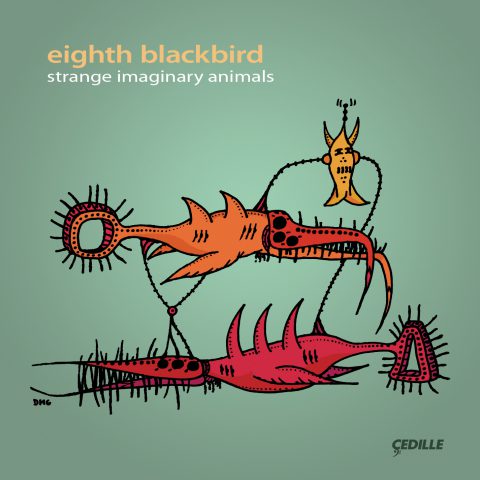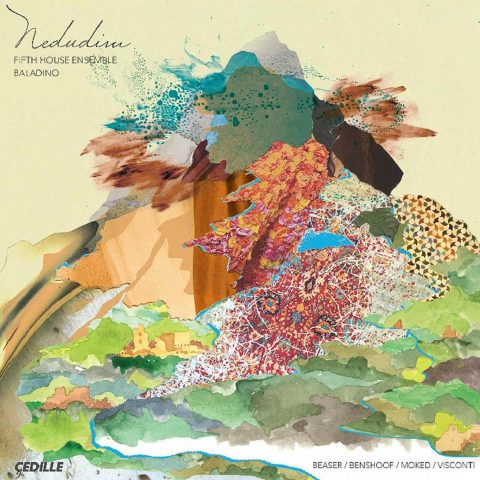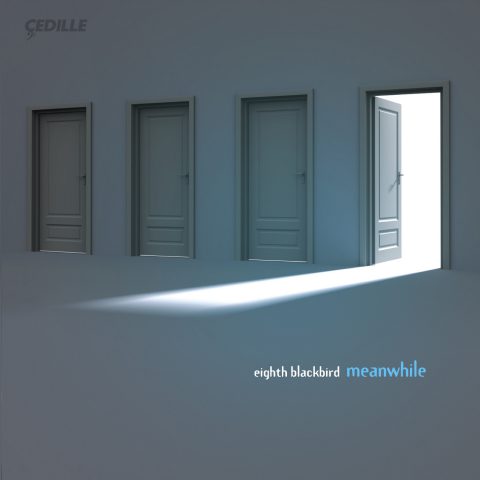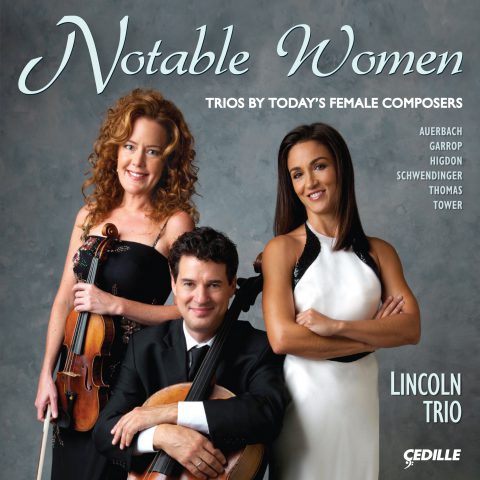Store
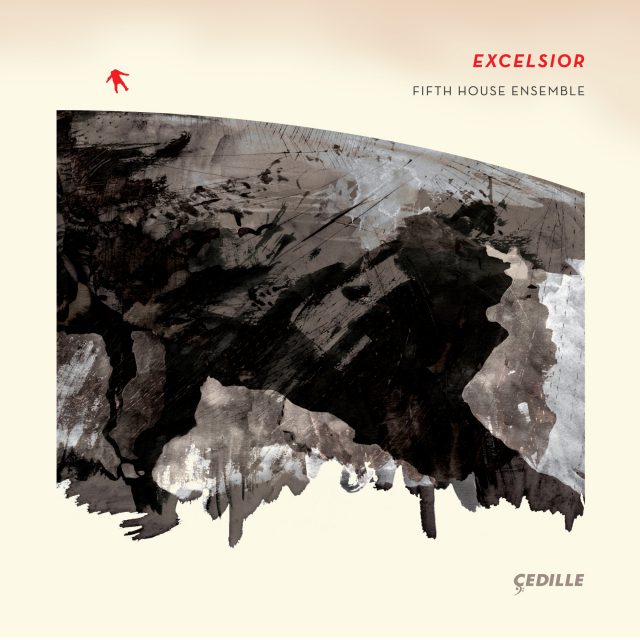
Visionary chamber-music group Fifth House Ensemble of Chicago aims for the stratosphere with Excelsior, its adventurous debut album on Cedille Records. The title refers to an experimental, extreme-altitude U.S. Air Force project of the Cold War era.
Excelsior presents world-premiere recordings of works by Caleb Burhans, recipient of commissions from Lincoln Center, Carnegie Hall, and the Library of Congress; prolific, award-winning composer Alex Shapiro; and Jesse Limbacher, winner of the ASCAP Morton Gould Young Composer Award. The disc also includes a work by Chicago Symphony Orchestra composer-in-residence, Mason Bates.
Preview Excerpts
ALEX SHAPIRO (b. 1962)
JESSE LIMBACHER (b. 1991)
MASON BATES (b. 1977)
Red River
CALEB BURHANS (b.1980) / JOHN COLETTI, librettist
Artists
1: Arranged for Fifth House Ensemble
2: Written for and premiered at the 2012 fresh inc festival
8: A New Music USA commission
Program Notes
Download Album BookletPerpetual Spark
Notes by Jani Parsons
ALEX SHAPIRO
This piece was inspired by the life, love, energy, and heart of Dale Mara Bershad, a gifted musician who often used her talents to share the joy of expression and wonder with young children. As a mother, teacher, and performer, Mara’s remarkable inner light cast an indelible glow. Her essence remains radiant and present: a spark from a life filled with passion and delight, burning brightly, intensely, and without end.
FIFTH HOUSE ENSEMBLE
Perpetual Spark, scored for piano, strings, and flute/piccolo, began as a piano solo; and indeed, the piano plays a crucial role in establishing the rich harmonies and sparkling texture that make this work truly spectacular. The addition of strings and flute creates a new dimension — a sense of propulsion and lift in the sound inherent to Shapiro’s style, that can only be described as exhilarating. Perpetual Spark‘s opening section highlights a florid sixteenth-note pattern in the pianist’s right hand, repeated and manipulated to create a constantly changing harmonic landscape against longer melodic gestures in the left hand, and in the strings and flute. This gives way to an expressive middle section marked by calm repose while simultaneously reaching forward in all instruments. My favorite marking in the score, “the spark still remains…”, occurs as the first section’s texture returns with an explosion of energy to the finale, bursting with a surging light that is never to be extinguished.
Air
Notes by Jennifer Woodrum
JESSE LIMBACHER
My reed trio is an essay on the plurality of meaning, musical and otherwise, inherent in the word “air.” The piece explores our most human uses of air in terms of breathing, speaking, and singing. As such, it incorporates the sounds of pure air and veiled human speech as well as instrumental lines and textures. The “journey” of the work can be heard as a gradual struggle from primordial mystery communicating many of the purest human actions and emotions, including fear, ecstasy, song, and dance. Listeners are encouraged to open their ears to the music in all of its sounds and to experience the piece, as a whole, as a life-affirming expression of the human condition.
FIFTH HOUSE ENSEMBLE
We premiered Jesse Limbacher’s Air as part of the fresh inc festival in June 2012. Working on the piece was like nothing we had ever done before as a trio. The process of exploring the effects in Air truly made me feel as if I had taken up a new instrument, quickly going between key clicks, traditional singing sound, whispering with speaking voices, blowing air, and speaking with heavily articulated percussive syllables. We all fell in love with this piece. It takes the listener on a journey of sound from air to lyrical singing.
Excelsior
Notes by Jennifer Woodrum
CALEB BURHANS
In an attempt to test both techno-logical advances and human limita-tions, the United States Air Force began experiments in 1958 to design parachute systems that would allow for high-altitude ejection from planes. The third and final test, Excelsior III, occurred on August 16, 1960, when Joseph Kittinger began a free fall from 102,800 feet. After 4 minutes and 36 seconds of free fall, Kittinger’s main parachute opened at 17,500 feet, allowing him to land safely on Earth’s surface. Excelsior takes this important event in history and explores its impact on the human psyche. The relativity of time allows this four-minute jump to be experienced through a 30-minute multi-media work.
FIFTH HOUSE ENSEMBLE
From the first reading of this piece, our ensemble unanimously fell in love with Excelsior. The writing is boldly minimalist, challenging each of us to play our acoustic instruments with the rhythmic, technical, and pitch accuracy of a sophisticated keyboard instrument. I find myself blissfully floating off into other worlds and dimensions during some my long periods of rest, only to abruptly “snap out of it” for my next entrance. It’s like Mozart in that it’s either right or wrong and there’s nothing in between; and then at times, as you groove in perfect rhythmic synchrony with the violin, you feel as though you are on stage with members of Pink Floyd.
It was a joy to have the entire ensemble on stage premiering this fantastic work with itsnotyouitsme and Martha Culver. Special thanks go to those who carried out all of the behind the scenes work that went into making the notes appear on the paper in front of us.
TEXT
In broken crib. tape, your arm
rocked of moving and
closed it again
lacked so lowingly
solid water all receiving
yellow elms scattered in mobile arrays
an antique light
come to staring ridge
of mercy. practicing simple breathing
beads of sweat, floating pupil
moth staggers goes out
slipping down bolt-shattered
eye trails. a hill of salt
snap to will
eleven cue balls misaligned
powered by, switch
pillow, points, face-planting
cannot connect
cannot connect
Red River
Notes by Jennifer Woodrum
MASON BATES
Combining a chamber ensemble with the rhythmic power and drama of electronics, Red River traces the journey of the great Colorado River to its various destinations in the Southwest — Las Vegas, the Grand Canyon, the California desert — where its overuse is a source of endless controversy. Perhaps no body of water better illustrates the age-old confrontation of humankind and nature than the great Colorado, whose very name embodies this struggle. Its early designation as Red River was a nod to the rich color arising from its special silt, which ultimately ended up trapped behind various dams erected along its way. The name was changed to pay homage to the river’s source, high up in the Colorado Rockies at the Continental Divide — and that is where this work begins.
The piece begins high up in the Rockies at the Continental Divide as various streams accumulate into a formidable body of water. Quicksilver figuration in the piano is echoed by the other instruments, and the electronica beats move from ambient trip-hop to energetic drum ‘n bass. These various musical streams unite in “Interstate 70,” an epic American freeway that parallels the Colorado through the State of Utah, and the electronics disappear as the ensemble falls into a bumpy and capricious ride.
As we arrive at the central, lyrical “Zuni Visions,” we find ourselves floating high above the river in the red rocks of Arizona’s Grand Canyon. The Zuni Indians once lived in caves up in the walls of the Canyon, and the atmospheric electronics and bending clarinet melody imagine us looking down at the river with them. This ponderous movement ends abruptly with the arrival of enormous machinery. The ensuing “Hoover Slates Vegas” uses all manner of industrial beats in the electronics to conjure the building of the Hoover Dam — the great sink of Las Vegas — with a nod to the razzle-dazzle of that thirsty city. Exhausted by all of this human activity, the river (and the piece) moves to its final resting place, the huge Sonoran Desert in southeastern California. The trickles of the opening have now run dry, and all we are left with is the buzzing of a Sonoran cricket amidst the vast emptiness of the desert.
Album Details
Total Time: 64:00
Producer: Judith Sherman
Engineer: Bill Maylone
Recorded: Chicago Recording Company on June 5, September 27-28, 2013
Front Cover Design: DM Stith
Inside Booklet & Inlay Card Design: Nancy Bieschke
Photography: SnoStudios and Fifth House Ensemble
Publishers: Perpetual Spark (© 2011 Activist Music); Air (© 2012 Jesse Limbacher); Red River (© 2007 Aphra); Excelsior (© 2012 Burning Hands / Good Child Music Publishing)
Excelsior was commissioned through New Music USA’s Commissioning Music/USA program, which is made possible by generous support from the Mary Flagler Cary Charitable Trust, New York City Department of Cultural Affairs, the William and Flora Hewlett Foundation, and the Helen F. Whitaker Fund.
© 2014 Cedille Records/Cedille Chicago
CDR 90000 148
